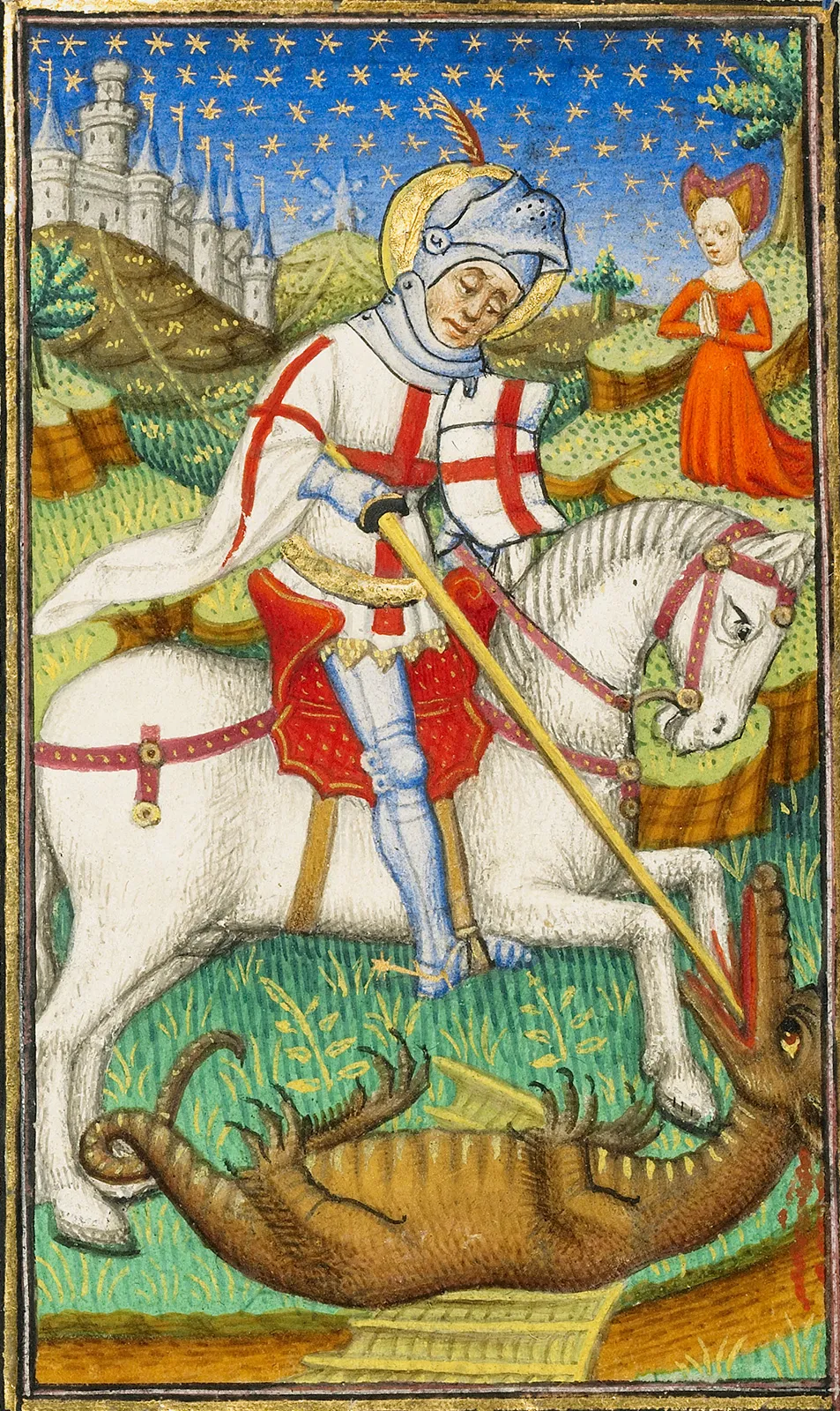Essay> The founding of Saint Georges Day, in England
The Founding of Saint George's Day in England
Introduction
Saint George's Day is a significant annual event in England, celebrated on the 23rd of April, in honour of the nation's patron saint, Saint George. This essay will discuss the origins of Saint George's Day in England, tracing its development and examining the cultural significance it holds today.
The Legend of Saint George
Saint George is a legendary figure with a complex and rich history. Born in the late 3rd century AD in Cappadocia, a region now situated in modern-day Turkey, he was a Christian Roman soldier who later became an officer in the Roman army under Emperor Diocletian. Saint George is best known for his mythical battle against a dragon, which has become an enduring symbol of his heroism and bravery.
The legend of Saint George and the Dragon is believed to have originated in the Eastern Orthodox Church and later spread to the Western world. The story tells of a dragon that terrorised a small town, demanding human sacrifices. When the king's daughter was chosen as the next victim, Saint George arrived to save her. He fought and defeated the dragon, slaying it with a single lance thrust. The grateful townspeople converted to Christianity in response to this miraculous event.
Establishing Saint George's Day
Saint George became the patron saint of England in the early 14th century, during the reign of King Edward III. He established the Order of the Garter, an elite chivalric order that would become the highest order of knighthood in England. Saint George was chosen as its patron due to his embodiment of the chivalric virtues of courage, honour, and loyalty, which were highly esteemed in medieval society.
The official recognition of Saint George's Day in England can be traced back to the Synod of Oxford in 1222, when the church declared the 23rd of April as the feast day of Saint George. However, it was not until the 15th century that the day gained widespread observance, when the English and Welsh bishops ordered that it be celebrated as a major feast day in their dioceses.
Cultural Significance and Modern Celebrations
Over the centuries, Saint George's Day has become a symbol of English patriotism and national pride. Today, it is a day to celebrate English culture, customs, and history. While not a public holiday, the day is marked by various events and activities across the country. Traditional celebrations include parades, reenactments of the legend of Saint George and the Dragon, and the display of the English flag, which features Saint George's Cross.
In recent years, there has been a resurgence of interest in Saint George's Day, with calls to make it a public holiday in England. This would allow the nation to celebrate its heritage and honour its patron saint in a manner similar to how other countries, such as Ireland and Scotland, commemorate their own patron saints.
Conclusion
Saint George's Day in England has its roots in the nation's medieval history and the legend of a brave and virtuous soldier who fought a fearsome dragon. As the patron saint of England, Saint George has come to represent the ideals of courage, honour, and loyalty, and his feast day is an opportunity for the English people to celebrate their unique culture and history.


- Media Title Saint George and the Dragon
- Media Type Image
- Website Name Encyclopædia Britannica
- Publisher Encyclopædia Britannica
- Url https://www.britannica.com/biography/Saint-George#/media/1/229970/230777
- Access Date 23 April 2023

Source:


